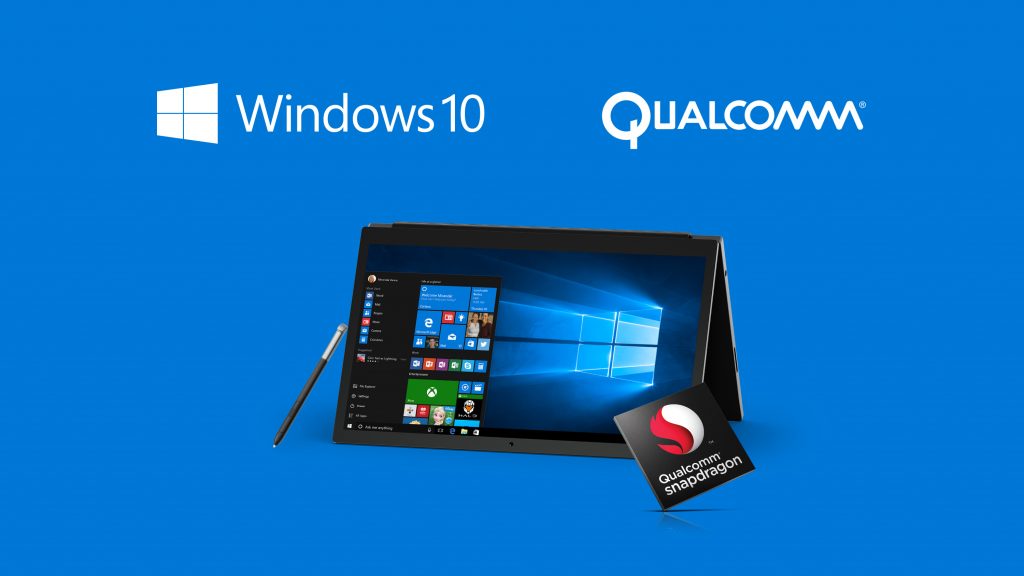At the Computex trade show, leading chipmaker Qualcomm today announced the very first hardware partners that it has signed up to develop the initial range of ARM-based Windows 10 PCs. It follows in line with Microsoft’s initiative to support the development of ‘mobile PCs’ powered by the latest and greatest processor — Snapdragon 835.
In the official blog post, the chipmaker has signed up three prominent technology bigwigs in the PC industry — ASUS, HP (Hewlett Packard), and Lenovo to build the first set of ARM-based Windows 10 computers. It seems the Redmond giant and Qualcomm have only managed to convince these three long-standing hardware partners to drive its reach to mobile processors as well.
It is kicking off the said initiative with only three partners but plans to add more hardware makers to its roster by the end of this year. And these devices will easily run x86 Windows apps available through the Windows Store i.e Windows 10 S. Speaking on this initiative, Cristiano Amon, executive vice president, Qualcomm Technologies said:
With compatibility for the Windows 10 ecosystem, the Snapdragon Mobile PC Platform will enable Windows 10 hardware makers to develop next-generation modern device form factors and deliver unparalleled anything, anywhere creation experiences with up to Gigabit-Class LTE connectivity.
Talking about the collaboration, Matt Barlow, corporate VP of Windows marketing, Microsoft said:
We are thrilled that OEMs are sharing our vision to bring the Windows 10 experience to the ARM ecosystem, powered by Qualcomm Technologies. This collaboration offers consumers something new and that they have been craving – the best of a mobile computing experience with the best of Windows 10, all in one thin, light, connected device.
The Qualcomm Snapdragon 835, for those unaware, is built upon the 10-nanometer FinFET architecture and features the Kryo 280 CPU, Adreno 540 GPU, and Hexagon 682 DSP, which helps the chipset manage separate heterogeneous workloads. Each of the aforementioned partners will build sleek, fanless Windows 10 S PCs, as it was shown in a demo earlier this month. This will be made possible due to the superior thermal handling and greater power efficiency of the chipset. It will also help improve the battery life of the devices.
But, the highlight of the Snapdragon 835 processor will have to be the Snapdragon X16 Gigabit LTE modem chip that’s been directly integrated into the chip itself. It means the devices built by the third-party OEMs will be able to support peak download speeds of up to 1 Gbps. The Snapdragon 835 Mobile PC Platform will also feature 2×2 802.11ac MU-MIMO for optimal Wi-Fi connectivity on the go.
Jerry Shen, chief executive officer, ASUS also comments on the collaboration as under:
The PC ecosystem continues to evolve, and this evolution requires new innovations in an ever-increasing mobile computing world. With the Snapdragon Mobile PC Platform powering our new lineup of Windows 10 devices, our users now can take advantage of new always on, always connected experiences available to them.
Alongside the said initiative, Microsoft has also announced an ‘Always Connected’ experience that brings LTE connectivity with the use of eSIMs to these ARM-based PCs. It has further been stated that Snapdragon-powered devices won’t be launched in the market until the fourth quarter of this year. Thus, you will soon have a simplified Windows 10 experience at your fingertips. But, would the Redmond giant be successful in pushing this initiative to the frontlines?
The Tech Portal is published by Blue Box Media Private Limited. Our investors have no influence over our reporting. Read our full Ownership and Funding Disclosure →






